Guira Cuckoo
The Guira cuckoo is highly social, often appearing in groups of 6-8 birds - although groups sometimes grow to around 20 individuals. They also have a pungent odour which is noticeable if you get very close, and around their night roost. The odour is produced by glands, but its significance is unknown - it could possibly a signal to social partners, or may simply be something unpleasant making them less attractive to predators.
Other Cuckoo Species in the Pantanal
Locally, the Guira cuckoo is known as Anu-Branco ("white Anu"). Aside from colouration, it is similar in appearance and habits to the Anu-Preto ("Black Anu") - known in english as the Smooth-billed ani, and with which it frequently co-exists. Other related species that you may see in the Pantanal include the Squirrel Cuckoo and Little Cuckoo (both orange in colour), the Striped Cuckoo, Pheasant Cuckoo, and Greater Ani.
Behaviour and Habitat
Although arboreal, the Guira cuckoo prefers open grassland for catching prey and feeding. As such, human modification of the landscape for agriculture and other land development has actually favoured the species - making it now one of the more common birds within Brazil. Guira cuckoos are frequently seen accompanying cattle in the fields, and loudly vocalising to one another. Their call is long and shrill - described as "something between a long whistle and a wailing".
The birds have a varied (and opportunistic) diet consisting of frogs, lizards, eggs, insects, nestlings of other birds, and mice. They're slow and clumsy fliers, and will mostly just hop or glide from perch to perch.
Guira Cuckoo (Guira guira) with a frog in its beak sitting on a fence post in the Pantanal. Credit: Shutterstock/Hal Brindley
Smooth-billed Ani or Anu Preto is a very similar species, aside from it's coloration. This frequently populates areas alongside the Guira Cuckoo. Credit: Andrew Mercer
Scientific Name
Guira Guira

Local Name
Anu-Branco

Description
Cuckoo measuring 36-40 cm in length, with a shaggy appearance. Has robust legs, long tail-feathers, streaked dark brown plumage, with a cream-coloured underside and head, and rough orange-tinted crest. Highly social, often seen in grassland areas in groups of 6-8 birds.
Reproduction
One of the Guira cuckoo's most unique attributes (although shared with several other closely-related Ani species) is its communal breeding behaviour. Females within the group often share a communal nest where they lay and incubate their eggs - sharing responsibilities. However, this "communal" nature isn't always positive - as there is competition between the parents, and it isn't uncommon for a parent to favour their own eggs or chicks by tossing others out of the nest. This means high mortality - with only a quarter surviving to become fledglings. It also makes the communal nest site easy to identify due to the number of broken or abandoned eggs on the ground below it.
The nest, itself, is typically built on a tree fork 2 to 5 m above the ground, and may contain around 20 eggs. The eggs are dark green colour, but covered with a chalky-white outer layer. Incubation takes 13-15 days, with another 10 days to reach fledging stage. The juveniles leave the nest before they can properly fly but will remain close by,, under the care of their parents for a short while afterwards.
Quick Facts
- When cold or raining, Guira cuckoos huddle closely together to maintain body warmth.
- The bird's name comes from the indigenous Tupi indian name Guirá-acangatara (wi'rá akãnga'tara) which means bird with the headdress - probably referring to its crest, which resembles an indigenous ceremonial headdress.
- The Guira cuckoo is known by many different names within Brazil. Although most commonly known as Anu-branco, it's also known by the names: anu-do-campo (field cuckoo), pelincho, guirá-acangatara, piló, piriguá, piririta, quiriquiri, quiriru, Rabo-de-palha (tail of straw), and alma-de-gato (soul of the cat),
- In areas where Guira cuckoo are feeding, there's always a sentry to give the alarm at the approach of intruders - such as hawks or people.
Conservation Threats
Guira cuckoos are categorised by the IUCN as Least Concern, as their number (and habitat) is increasing thanks to their suitedness for grasslands and agricultural developments.



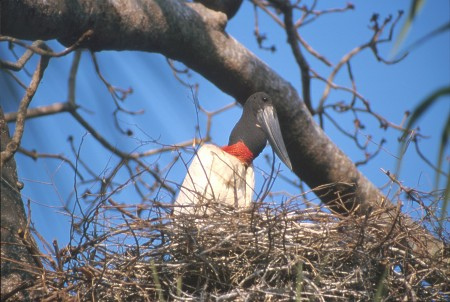
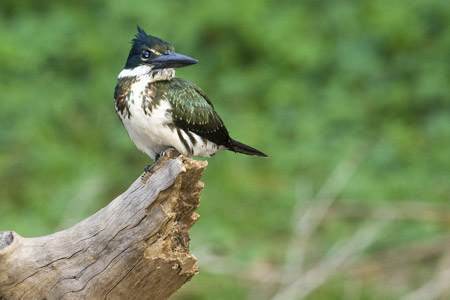
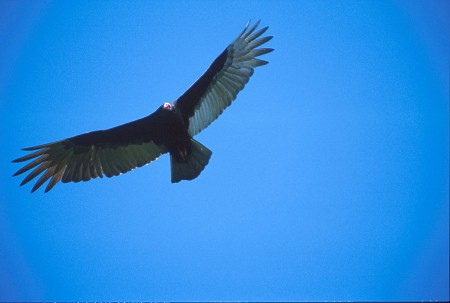


Banner image: Guira Cuckoo on the riverfront in Corumbá (Andrew Mercer)
Guira Cuckoo eating frog (Shutterstock/Hal Brindley); Footer images: Tuiuiú, Turkey Vulture(Andrew Mercer); Amazon Kingfisher (Shutterstock/Ecoventurestravel)
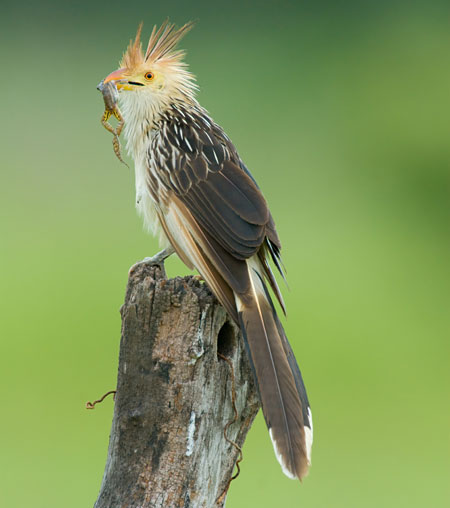
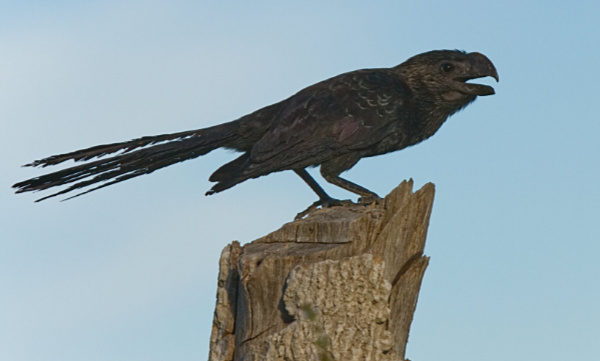
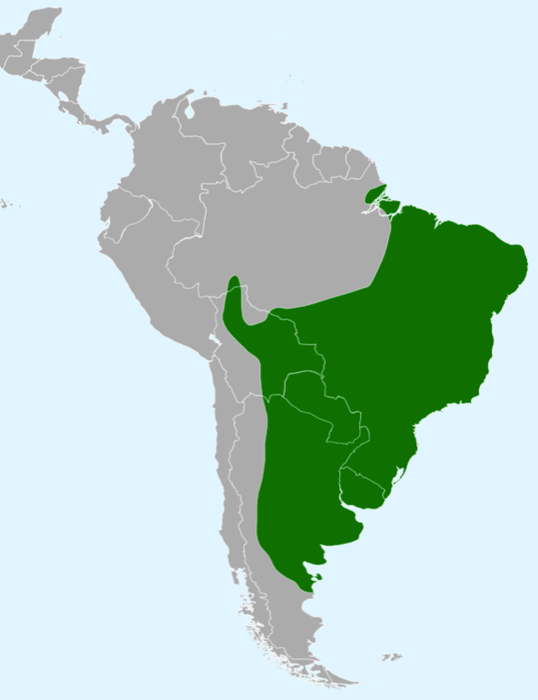
Pantanal Escapes